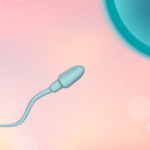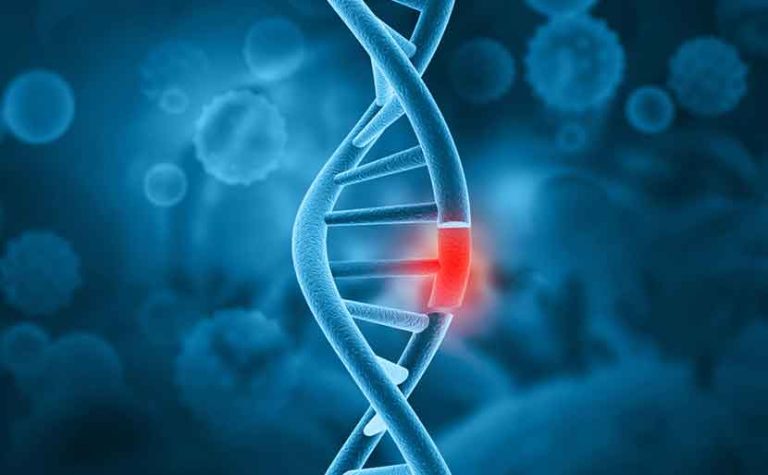Summary of this Article
When a pregnant mother smokes, it increases the likelihood of various pregnancy and childbirth complications such as miscarriage, preterm birth, fetal growth restriction, bleeding, abnormal rupture of membranes (e.g., premature rupture of membranes), placenta previa, placental abruption, stillbirth, and low birth weight. Additionally, it raises the chances of neonatal abnormalities, including perinatal death and congenital abnormalities where the baby is born with inherent diseases.
Effects of Smoking During Pregnancy on the Baby
When a pregnant mother smokes, it increases the likelihood of various pregnancy and childbirth complications such as miscarriage, preterm birth, fetal growth restriction, bleeding, abnormal rupture of membranes (e.g., premature rupture of membranes), placenta previa, placental abruption, stillbirth, and low birth weight. Additionally, it raises the chances of neonatal abnormalities, including perinatal death and congenital abnormalities where the baby is born with inherent diseases.
The longer the smoking period or the higher the number of cigarettes smoked, the greater the risk of these abnormalities.
Here, we will briefly explain five of these abnormalities: miscarriage, preterm birth, stillbirth, low birth weight, and congenital abnormalities.
Miscarriage
Miscarriage refers to the death of a fetus before 22 weeks of pregnancy. It is said that 15-20% of confirmed pregnancies end in miscarriage, with approximately 85% of miscarriages occurring by the 12th week of pregnancy.
Most miscarriages that occur by around the 11th week of pregnancy are caused by congenital abnormalities or genetic disorders in the fetus. Smoking is cited as one of the causes of congenital abnormalities, and it is not uncommon for women who smoke to have spontaneous miscarriages without realizing they were pregnant.
Among the known causes of miscarriage after the 12th week of pregnancy related to the mother are uterine structural issues such as uterine fibroids or cervical insufficiency, severe internal diseases (thyroid dysfunction, diabetes, hypertension), infections, as well as smoking, alcohol consumption, and drug use.
Preterm Birth
Preterm birth refers to childbirth occurring from 22 weeks and 0 days to 36 weeks and 6 days of pregnancy. It has been found that pregnant women who smoke are 1.4 to 1.5 times more likely to experience preterm birth compared to non-smoking pregnant women.
Preterm birth occurs in approximately 5% of all pregnancies. Babies born preterm have to leave their mother’s womb before their bodies are fully developed, making them smaller and lighter in weight compared to babies born at full term (37 weeks and 0 days to 41 weeks and 6 days of pregnancy). The weight of a baby at 22 weeks of pregnancy is around 500 grams, and their organs are not fully developed, rendering them unable to breathe on their own. They require long-term treatment in the neonatal intensive care unit (NICU).
Additionally, among babies born weighing less than 1000 grams, 10-20% are left with severe sequelae such as cerebral palsy.
Stillbirth
Stillbirth is defined by the Ministry of Health, Labour and Welfare as “the birth of a baby who has died in the womb after 12 weeks of pregnancy.” Unfortunately, in the event of a stillbirth, it is mandatory to report it to the mayor of the city, ward, town, or village where you reside.
Low Birth Weight
Low birth weight infants are babies who weigh less than 2500 grams at birth. As explained in the section on preterm birth, low birth weight infants have underdeveloped organs, leading to higher mortality rates and often requiring medical care such as management in the neonatal intensive care unit (NICU).
Furthermore, these infants have a higher likelihood of cerebral palsy, intellectual disabilities, and delayed growth and development. It is also known that they have a higher risk of developing lifestyle-related diseases as adults.
Even if a pregnant woman smokes just one cigarette a day, the risk of delivering a low birth weight infant increases. When comparing babies born to smoking and non-smoking pregnant women, babies born to smoking mothers weigh on average 200 grams less. Particularly in the case of heavy smokers who smoke more than 10 cigarettes a day, there are reports of babies being born weighing 450 grams less than the average birth weight.
Congenital Abnormalities
Congenital abnormalities are defects that occur before birth. It is said that pregnant women who smoke have a higher incidence of conditions such as hydrocephalus, microcephaly, cleft lip and palate, clubfoot (e.g., bowlegs or knock-knees), and abnormalities of the fingers.
The components of cigarettes are said to damage genes, which is related to the occurrence of genetic disorders such as Down syndrome. For example, in the case of Down syndrome, it has been reported that smoking by mothers under the age of 34 increases the incidence by 2.98 times.
If you are concerned about genetic disorders such as Down syndrome in your fetus, you might consider undergoing NIPT (Non-Invasive Prenatal Testing).
Effects of Father’s Smoking on the Baby
Father’s smoking also has negative effects on the baby. It is known that if the father smokes, the risks are similar to those when the pregnant mother smokes, including:
- Miscarriage
- Preterm birth
- Stillbirth
- Low birth weight
- Congenital abnormalities

Effects on the Baby When the Mother Smokes After Birth
Even if parents do not directly expose their baby to cigarette smoke, harmful tobacco components are present in their exhaled breath, clothing, and hair.
Furthermore, it has been reported that nicotine can be detected in the breast milk of mothers who smoke after giving birth. Therefore, it is strongly recommended to continue abstaining from smoking during breastfeeding.
Effects of Passive Smoking on the Baby
It is known that passive smoking can also negatively affect the baby when not only the pregnant woman but also cohabiting family members, including the father, smoke. As of 2019, the smoking rate has declined compared to the past, with 27.1% of men and 7.6% of women smoking. However, data shows that about 30% of men aged 30-60 smoke habitually.
Passive smoking in babies increases the risk of diseases such as Sudden Infant Death Syndrome (SIDS) and also raises the risk of developmental disorders such as Attention Deficit Hyperactivity Disorder (ADHD).
Additionally, data shows that passive smoking can lead to:
- Difficulty in height growth
- Lower IQ
- A higher likelihood of committing violent crimes in the future
These findings indicate that passive smoking has very significant negative impacts on babies.
What is Sudden Infant Death Syndrome (SIDS)?
Sudden Infant Death Syndrome (SIDS) is a condition where a seemingly healthy baby suddenly dies without any prior signs, symptoms, or underlying medical conditions. It is characterized by the absence of any warning signs.
SIDS occurs at a rate of 1 in 4,000 and is most common in babies aged 2 to 6 months.
While the exact cause of SIDS is unknown, both maternal smoking during pregnancy and passive smoking are suspected to contribute to the risk. It has been reported that the incidence of SIDS is approximately 4.7 times higher in households where parents smoke compared to households where parents do not smoke.
When the mother smokes, in addition to the risk of SIDS, the baby is more likely to develop respiratory illnesses such as bronchitis, pneumonia, and bronchial asthma. There is also an increased likelihood of conditions such as otitis media (middle ear infection) and low birth weight.
Most Common Accidental Ingestion: Cigarettes
Accidental ingestion of cigarettes can cause acute nicotine poisoning in babies. Acute nicotine poisoning occurs when symptoms such as dizziness, diarrhea, abdominal pain, confusion, and coma arise after accidentally ingesting or consuming cigarettes. In severe cases, it can be fatal.
The lethal dose of nicotine for babies is 10-20 mg. Since a single cigarette contains 16-24 mg of nicotine, consuming just one cigarette can potentially lead to life-threatening situations. Babies tend to put everything into their mouths, so in households where smoking occurs, it is crucial to dispose of cigarette butts properly and keep cigarettes and ashtrays out of the baby’s reach.
For example:
- If a baby eats more than 2 cm of a cigarette
- If a baby drinks liquid that has been soaked with a cigarette
In such cases, gastric lavage may be necessary, so it is important to visit a medical facility promptly, even if there are no symptoms.
Specific Effects of Ingredients in Cigarettes
Among the components of cigarettes that are known to have specific harmful effects on babies are nicotine, carbon monoxide, tar, and oxidizing substances such as reactive oxygen species (ROS).
These harmful components are present not only in mainstream smoke, which is inhaled directly through the cigarette filter, but also in sidestream smoke, which comes from the burning end of the cigarette. Therefore, even if the pregnant woman herself does not smoke, the harmful effects of tobacco can still impact her and the fetus if family members living with her smoke.
Sidestream smoke contains a higher quantity of harmful substances than mainstream smoke, so it is crucial for smokers to be aware that they are causing greater harm to those around them than to themselves.
Nicotine
One of the most significant harmful components in cigarettes is nicotine. Nicotine has a vasoconstrictive effect, meaning it causes blood vessels to narrow. When blood vessels constrict, blood flow decreases, making it harder for oxygen and nutrients to reach the fetus in the womb. Notably, nicotine can be absorbed not only through the mouth, such as from smoking, but also through the skin. For example, if one touches clothing or furniture contaminated with tobacco particles, nicotine can be absorbed through the skin, potentially causing harmful effects on the baby.
Carbon Monoxide
Carbon monoxide reduces the amount of oxygen that reaches the fetus. Oxygen is carried throughout the body by binding to hemoglobin in the blood. It is also transported to the fetus through the placenta. However, carbon monoxide binds to hemoglobin in place of oxygen, thereby taking the spot that oxygen would occupy. This displacement reduces the oxygen available to the fetus, leading to potential developmental issues.
Tar
Carcinogens, literally meaning cancer-causing substances, are found in tar, which is highly adhesive. Tar sticks to the mouth, throat, lungs, and esophagus for extended periods, causing harm. The incidence of cancer in smokers is 1.6 times higher for men and 1.5 times higher for women compared to non-smokers. Scientifically proven cancers related to smoking include oral and pharyngeal cancer, laryngeal cancer, lung cancer, esophageal cancer, as well as nasal and paranasal sinus cancer, stomach cancer, liver cancer, pancreatic cancer, cervical cancer, and bladder cancer.
Others
In addition to nicotine and tar, cigarettes contain numerous toxic and carcinogenic substances such as cyanide compounds (poisons), dioxins (carcinogens), cadmium (carcinogen), and formaldehyde (carcinogen).
Moreover, cigarettes also contain reactive oxygen species (ROS) inducing substances. An excess of reactive oxygen species in the human body is not only linked to cancer but also increases the risk of heart diseases and lifestyle-related diseases.
Main Reason for Being Unable to Quit Smoking: Nicotine Addiction
The reason people cannot quit smoking, even if they want to, is because they have developed a nicotine addiction. Nicotine addiction is characterized by feeling unwell or experiencing a decline in the quality of work or tasks without smoking. This operates on the same principle as alcohol dependence, where a person becomes agitated when deprived of alcohol.
Nicotine has addictive properties and acts on the brain to create feelings of pleasure and comfort. To feel “good” or “comfortable,” substances like noradrenaline and serotonin need to be secreted by the brain. In the case of nicotine addiction, these substances are not secreted without nicotine. As a result, when nicotine is absent, a person feels irritable and uncomfortable. These unpleasant sensations are alleviated by smoking and replenishing nicotine, making it difficult to quit smoking.

Quitting Smoking During Pregnancy
Quitting smoking during pregnancy has significant benefits. Here, we will briefly explain the advantages of quitting smoking and clearly summarize the benefits of quitting before and during pregnancy.
Benefits of the Father and Mother Quitting Smoking
In addition to pregnant women, if the father and other cohabiting family members quit smoking, it will significantly reduce the risk of various illnesses in the baby, as explained above, and help protect the baby’s health.
Additional benefits include:
- The money previously spent on cigarettes can be used for other purposes
- Improved health of the father and mother themselves
- Reduced risk of diseases for the father and mother
- Increased longevity for the father and mother (it is known that smoking shortens life expectancy by about 10 years)
Especially in this era of high living costs, saving on cigarette expenses is a significant benefit when considering future child-rearing. The cost of a pack of cigarettes is expected to rise in the future, so quitting smoking as soon as possible will greatly help protect the family budget.
Effective Time to Quit Smoking
Some may think, “I’m already in the late stages of pregnancy, so quitting smoking now won’t have any effect,” but the conclusion is that this is not true. If you start quitting smoking today, you can expect significant benefits compared to continuing to smoke. Additionally, since nicotine transfers into breast milk, it is very important to continue abstaining from smoking after giving birth.
Quitting Before Pregnancy
That said, the best choice is to quit smoking as soon as you decide to become pregnant. Smoking is considered a cause of infertility. There are reports that smokers have more than three times the infertility rate of non-smokers. When smokers quit smoking, the risk of various diseases is reduced, and it becomes easier to conceive.
Incidentally, if you quit smoking before becoming pregnant, the birth weight of your baby will be comparable to that of a baby born to a non-smoking mother.
Quitting After Pregnancy
Quitting smoking after becoming pregnant still provides significant benefits. Notably, if you quit smoking by the early stages of pregnancy (3-4 months), the risk of having a low birth weight baby becomes the same as that of a non-smoking pregnant woman. Additionally, the risks of preterm birth and perinatal death are also reduced.
While the earlier you quit smoking, the better, quitting in the later stages of pregnancy is still very beneficial in terms of not causing further harm to the baby.
Stress of Quitting Smoking During Pregnancy
There is some validity to the argument, “I won’t quit smoking because it seems like quitting during pregnancy will cause stress.” The stress from quitting smoking can lead to anxiety, irritability, depression, and sleep disorders. Excessive stress can also potentially affect the fetus in the womb.
However, it is worth quitting smoking to protect the baby’s health, even if it means overcoming stress. This is because the harmful effects of smoking on the baby are clearly greater than the adverse effects of stress.
Moreover, it is known that the peak of withdrawal symptoms from nicotine addiction occurs within 2-3 days. Once this peak is overcome, the stress from quitting smoking significantly decreases.
When a pregnant woman or family member decides to quit smoking, it is important to create an environment that minimizes the stress of quitting. This can be achieved by ensuring strong support from those around them and by visiting a smoking cessation clinic.
Tips for Quitting Smoking During Pregnancy
The key to quitting smoking is “not relying solely on your willpower.” This is because the inability to quit smoking is due to nicotine addiction, which is a disease, not a matter of willpower.
For pregnant women, it is safest to seek help from medical institutions. Many healthcare providers offer smoking cessation clinics, and some obstetrics departments provide support for quitting smoking. It is recommended to consult your primary care hospital first.
If you decide to quit smoking on your own, it is more effective to “quit abruptly” rather than “gradually reducing the number of cigarettes.”
Avoid setting unrealistic goals. Start with short periods of smoking cessation, such as “during a meeting” or “half a day.” Once you achieve that, gradually extend the smoke-free period to one day, two days, three days, and so on.
It is important to note that nicotine patches, commonly known as smoking cessation aids, are contraindicated for pregnant women in Japan. Avoid using them casually.
Effectiveness of Common Smoke Prevention Measures
While understanding that smoking is harmful to your baby, some may still find it impossible to quit and want to minimize the harm as much as possible. Despite various measures available, the conclusion is that there are no clearly effective measures. This is because all smoking countermeasures ultimately involve smoking. Here, we will briefly summarize the common smoking countermeasures and their effectiveness.
The reason these smoke countermeasures are ineffective is that harmful components of tobacco are not only contained in the smoke but also in the exhaled breath of the smoker. Harmful components can be detected in the breath (exhaled air) for about 40 minutes after smoking. Simply talking nearby or spending time in the same room can expose others to these harmful components.
To prevent exposing your baby to the harmful effects of tobacco, it is recommended not to hold your baby for about 40 minutes after smoking.
Smoking Under the Vent Hood
One of the most commonly adopted methods is smoking under the ventilation hood. Watching the smoke being sucked up through the vent can give the illusion that you are doing something good.
However, unfortunately, not all cigarette smoke is ventilated away. Additionally, harmful substances from the tobacco remain on the smoker’s clothes and hair. If a baby touches the clothes or hair of the smoker, the baby can still be exposed to the harmful effects of tobacco.
Smoking in a Separate Room
Some fathers may choose to smoke in a different room from the baby or pregnant mother. While this might reduce the amount of direct smoke they are exposed to, using a ventilation fan can cause the smoke to travel from the room to the fan. The harmful substances can then spread to other rooms through the ventilation system, rendering this measure largely ineffective.
Smoking on the Balcony
Many people smoke on the balcony, but smoke can enter through gaps in the window sashes. The harmful substances that adhere to clothes and hair when smoking do not come off easily, so when you return indoors, you bring these harmful substances into the house. Unfortunately, this method is also largely ineffective.
Switching to Electronic Cigarettes
A popular method recently is switching from traditional cigarettes to electronic cigarettes or heated tobacco products.
While it is true that electronic cigarettes produce relatively less smoke, leading to a perception of reduced smoke inhalation, they generate less carbon monoxide since they do not involve combustion. Additionally, electronic cigarettes contain over 90% less nicotine and tar compared to traditional cigarettes.
However, since electronic cigarettes and heated tobacco products have only been on the market for a short time, the long-term health impacts are not well understood. There is little information about their effects on pregnant women and babies, meaning there is a possibility that they could be as harmful or even more harmful than traditional cigarettes.
Moreover, electronic cigarettes contain harmful substances in quantities similar to traditional cigarettes, excluding nicotine and tar. The aerosols (fine mist) produced have been shown to have detrimental health effects, with numerous cases of severe lung disease among American youth linked to their use.
Additionally, because the smoke from electronic cigarettes is less visible, there is a higher risk of unintentional passive smoking. Some products have small cartridges, increasing the risk of accidental ingestion compared to traditional cigarettes.
Conclusion
In conclusion, I have explained the effects of tobacco on babies. Smoking has no benefits from before pregnancy through the breastfeeding period. For the sake of the baby, it is strongly recommended that not only the pregnant woman but also the father and all cohabiting family members quit smoking. If quitting smoking proves difficult, please consider visiting a smoking cessation clinic.
There is scientific evidence that tobacco is harmful to babies. Make the right choice to protect your precious baby.
【References】
- Latest Tobacco Information – Adult Smoking Rate (Ministry of Health, Labour and Welfare National Health and Nutrition Survey)
- Ministry of Health, Labour and Welfare – Status of Smoking and Passive Smoking in Women, and Its Effects on Pregnancy and Childbirth
- Ministry of Health, Labour and Welfare – Smoking and Health
- Ministry of Health, Labour and Welfare – Sudden Infant Death Syndrome (SIDS) | e-Health Net (Ministry of Health, Labour and Welfare)
- Ehime Medical Association – Smoking During Pregnancy and Its Effects on Children
- Japan Association of Obstetricians and Gynecologists – Alcohol, Smoking, and Congenital Abnormalities
- Nara Prefecture – I. Health Effects of Smoking by Pregnant Women on the Fetus and Children
- Japan Association of Obstetricians and Gynecologists – I switched to low-nicotine cigarettes and reduced the number of cigarettes since I became pregnant. It’s okay to smoke a little, right?
- Ministry of Health, Labour and Welfare – Low Birth Weight Infant Health Guidance Manual
- Toyama Prefecture – Is “Born Small, Grow Big” a Risk Factor for Developing Adult Diseases?
- Japan Society of Obstetrics and Gynecology – Miscarriage and Threatened Miscarriage
- Cancer Prevention Research Center, Prevention-related Project – Relationship Between Smoking and Overall Cancer Incidence
- Ministry of Health, Labour and Welfare – Mainstream Smoke | e-Health Net
- Ehime Medical Association – Mainstream Smoke and Sidestream Smoke
- Osaka Pediatric Association – Accidental Ingestion of Tobacco | Osaka Pediatric Association
- Environmental Restoration and Conservation Agency – Medical Topics: The Harm of Tobacco Affects Not Only Smokers, But Also Their Families and Surroundings!
- Osaka Cardiovascular and Cancer Prevention Center – The Need for Smoking Cessation Support for Pregnant and Postpartum Women
- Miyagi Prefecture – Tobacco Measures / Smoking and Pregnant Women
- Japanese Circulation Society, Smoking Cessation Promotion Committee – Tobacco Addiction | Smoking Cessation Promotion Committee
- Ministry of Health, Labour and Welfare – Nicotine Addiction | e-Health Net
- Japanese Respiratory Society – Japanese Respiratory Society’s Opinions and Recommendations on Heated Tobacco and Electronic Cigarettes (Revised 2019-12-11)
- CiNii Article by Masakazu Takahashi – Health Risks of New Tobacco Products (Heated Tobacco, Electronic Cigarettes)
- Nara City – Did You Know? The Health Effects of Electronic Cigarettes and Heated Tobacco Products – Let’s Have the Right Knowledge
- Hiroshima Medical Association – Smoking Cessation Corner (Smoking and Down Syndrome): A Column for the Citizens of Hiroshima
- Nara Prefecture – Methods for Supporting Smoking Cessation in Pregnant Women
Article Editorial Supervisor

Dr Hiroshi Oka
NIPT specialist clinic, MD
Graduated from Keio University, School of Medicine
 中文
中文






















